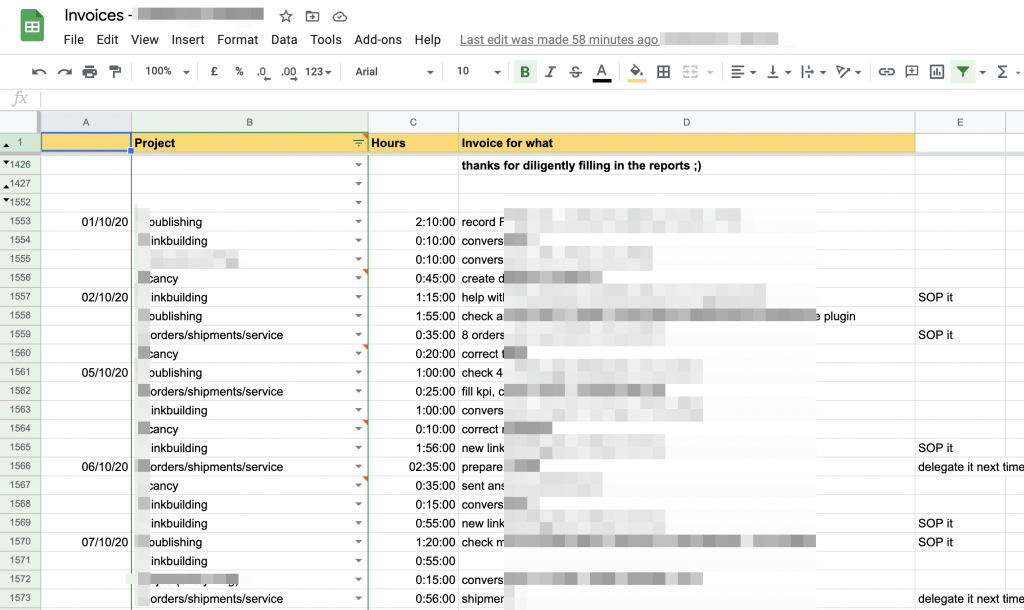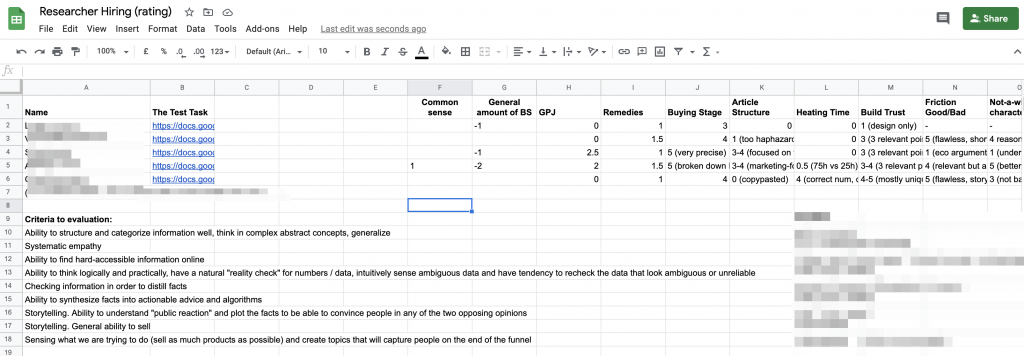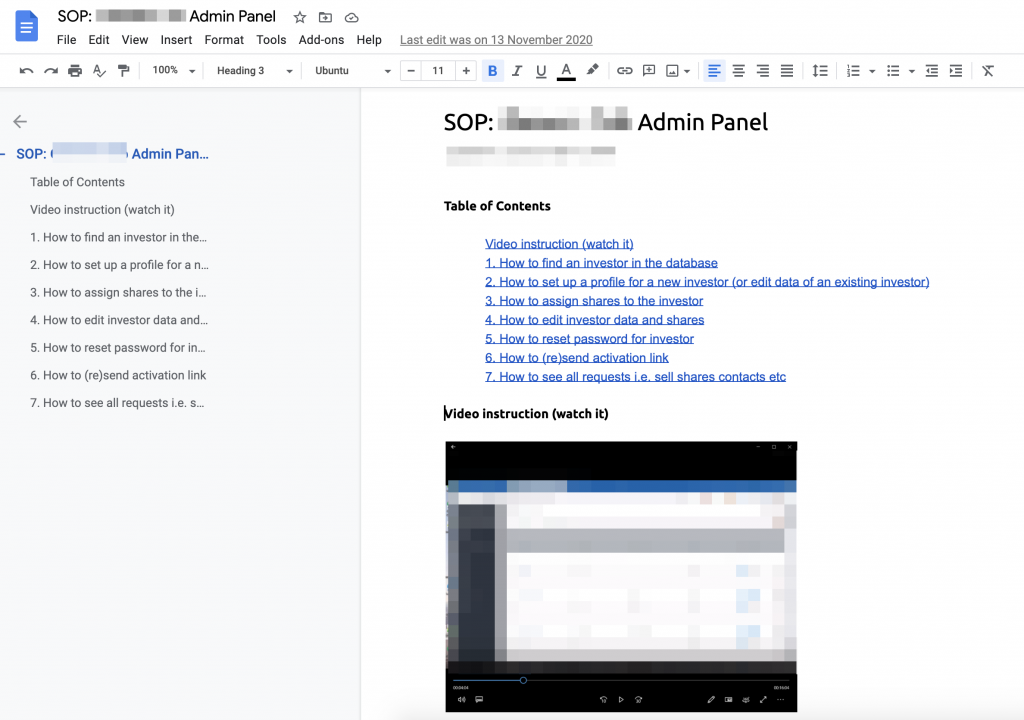It has been a couple of years since I am living off my entrepreneurial projects. I went through several transformations as a manager and improved due to making painful mistakes and reflecting on them, and also from watching how others structure their work. Out of three companies that I and my partner are managing, two are running on autopilot (or are close to it).

While my management style is a mix of my own inventions fused with the influences of great managers and people leaders I worked and still work with or whose works I read, I think most of the things we take for granted in our companies is something contrary to the common practices, but they are very efficient. Most of these concepts aren’t well-known nor widely used. Some of them have never been covered before, but may present some value, and that’s why I want to share them.
1. Everyone works on an hourly basis, with flexible hours, even if they work full-time
That means they have a document called “invoices”, and they write down every single hour they spent and add an explanation of what they were doing. This way they ‘invoice’ us (every day) and get paid (every 2 weeks). This might sound similar to the despised “time-tracking”, but it is not. We never check if employees write the true amount of hours – we completely trust them. The purpose of this system is not to control things; the purpose is to instill self-discipline and the Culture: we believe people have to be paid for the hours worked, not for the hours ‘present’. We don’t want our teammates to waste their lives / hours of day, as in the long run it hurts everyone. Kind of obvious?

An example of the invoices document
Among the other benefits, this helps us to see what activities are going on (perhaps something is not needed anymore? or we can automate something?). It also helps us to see how motivated are people. Is someone struggling? Needs help? Training? Maybe a change in the work duties?
2. Everyone works remotely
We work like that since 2018. Previously, we used to have an office but it wasn’t quite popular. People can socialize with their friends or on our online meetups, but in general the ‘office atmosphere’ is quite overvalued. Our team values freedom: the freedom to travel, freedom to work, or to not to work, freedom to develop or to stay on the current level. This reflects our philosophy.
3. Hire only the top 3% to 10%. When hiring, hire for the specific tasks, and test how people perform on every kind of their future jobs
We hire external senior people quite rarely (and so far, only for very specific tasks like motion design). Every one of our managers has grown up in the company. We also have almost zero turnover.
How do we hire? Well, try to not. We work by ourselves without extending the team (and try to automate our work) to the point when it’s unbearable anymore. Then, when we can’t handle it anymore, we open the Invoices documents and look for the tasks that can be delegated. We look for tasks that are repetitive, can’t be reasonably automated via Zaps / Google Spreadsheets, require the same set of personal strengths, and add up to an almost full-time position.
Before hiring, we have a long list of ‘jobs’ that the person will handle (e.g. negotiations? structuring and analyzing this and that data in Spreadsheets? writing business emails?). Then we create a long test task that covers each of those jobs. We try to adjust each task is a way that on average only 50% of the participants will accomplish it successfully (there’s no use in test tasks that no one can’t accomplish, or that everyone accomplishes successfully, as a great test task shall enable you to rank people from the best to the worst fit for the job).
Usually, we keep the position open until we have 70-100 applicants. Out of 100 applicants, only 30 will usually accomplish a test task. 3 to 5 of them will be great, another 5 to 10 are good. Then we interview them, trying to reveal their values and who they are as individuals and what is their self-identification. After you handled like 100-150 interviews and then saw how those people handle the day-to-day, and reflected upon that, you obtain a great sense (or an intuition) of what people are like, and you can hear almost an audible click when the person you’re interviewing is a fit for the job and for the team.

The test task ranking document
We take only the top 3% to top 10% of the applicants (as ranked by the test task), so that whoever gets on the interview is already skilled or inclined to do the future job. Our entry threshold directly defines our upper limit: the newbies hired today are the top-managers of tomorrow. Can we imagine this person becoming a top manager? Though of course, we have some positions that do not require growth, so we can relax a bit in those cases.
4. Do micromanage, until you don’t have to. Create very specific SOPs (step by step textual instructions accompanied by videos)
To junior and middle staff, we delegate only the specific tasks that require zero ‘figuring out’. Why? Because we need everyone to be successful and whatever they do (the ‘success rate’ needs to be between 60% and 80% so there’s both growth and feeling of being successful).
Almost everything that happens in a company is explained in a step-by-step SOP instruction, and there’s also a video that explains the same thing but in a video format. It is literally step-by-step: go there, open that file, press those buttons, etc.
Having video-SOPs serves three purposes:
a) teaching system, so the managers don’t have to be parrots and repeat the same stuff to every new employee,
b) it eases the shift of responsibilities for people – so that people can flow between the different types of responsibilities easily whenever they do not like anymore what they are doing and need a new challenge,
c) helps to spread the culture, as when the manager records the video, he also crystallizes there his approach to work (from the way he visually designs documents to the way he looks for and fixes mistakes to the way he thinks because he explains what he did and why on the videos, too).

An example of a SOP
If there’s no SOP for something, we do not hire a person to do that “something” (an exception would be senior positions, where the person we hire is supposed to know how to figure everything out and how to create SOPs for his subordinates, but that’s rare that we )
5. My KPI: the happiness of those I work with. The work shall be interesting and purposeful
One of my key metrics is how happy (or satisfied) are the people I work with (directly and, to a lesser extent, indirectly, as I don’t impact their happiness too much). Why? Because Results = Motivation x Skill, and also motivation leads to acquiring better skills. In other words, satisfied and purposeful, driven people are more productive. I’m also much happier this way, what is even more important to me than productivity.
I figure out what parts of the work are not interesting anymore and replace them with new challenges. Also, being just a normal person (vs. being a ‘manager’) helps. I also try to match the jobs with the purpose that each person is pursuing and her personal goals. Other ways to keep the team happy? Start with answering the question: what makes them unhappy. Usually, everyone wants to feel successful, to feel challenged, to see how can he/she achieve his own goals working on this project and how his future development will look like, to be respected, his effort and extra effort recognized and appreciated, his opinion accounted for.
These are just a few of the principles we stick to, and I am not sure that if you replicate just these five it will be enough to replicate the whole system, but I think they can still bring some value if applied independently, as much of the stuff above is universal.